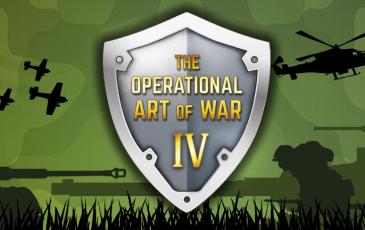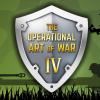Alternative WW3 - Chapter II ARCTIC FRONT - Century of Warfare, TOAW III, and TOAW IV

| Rating: | 0 (0) |
| Games Played: | 0 |
| SM: | 10 |
| Turns: | 200 |
| Type: | Custom |
| First Side: | USSR |
| Second Side: | NATO |
| Downloads: | 313 |
Alternative WW3 - Chapter II
ARCTIC FRONT
Version 1 beta for Toaw 3.4
1. Unit Colors
1.1. USSR
- Red on Green: Army
- Red on Dark Red: Air Force
- Black on Dark Red : Navy
- Grey on Dark Red: KGB
- Blue on Blue : Mines
- Black on Black : Submarines
1.2. NATO
- White on Green: US Army
- Green on Green: US Marines
- Grey on light Grey : US Air Force
- White on Dark Grey : US Navy
- Blue on Dark Green : British Forces
- Blue on OD: XVIII Airborne Corps
- Blue on White : Finland
- Blue on Green : Norwegian Army
- Blue on Blue : Norwegian Navy
- Yellow on Grren : Belgian
- Grey on Green : Italian
- Yellow on Blue : Netherlands
- Black on Green : German
- Black on Brown : Canada
- Light Blue on Green : France
- Dark Blue on Green : Sweden
- Dark Blue on Black : Convoys
- Blue on Blue : Mines
- Black on Black : Submarines
2. Background
In summary, this scenario presupposes that the USSR did not collapse and actually reformed during the 1970's by Yuri Andropov after the premature death of Leonid Brezhnev. Cuba, with USSR support and with the discovery of oil near it's shores actually thrived during the 1980's and 1990's.
The US government, after 8 years of Reagan, 8 years of Bush and now with new president Dan Quayle winning the very disputed and controversial elections of 1996 has to face a political crisis in Latin America as more and more of the pro-USA regimes face unrest and turmoil, as well as economical as the finance and housing bubble of the last 15 years is bursting bringing many business to lay off people and seriously doubt the wisdom of a strong capitalist financial sector.
The president's cabinet - with secretary of Defense Donald Rumsfeld, Vice-President Dick Cheney (of whom some say is the real decision maker in the US government), and others, prepare for war. Not only do they support and finance a growing military presence in Latin America, but also are supporting Caucasus and Central Asian ethnic and nationalist movements. The collapse of Yugoslavia is also backed by the USA and NATO, throughout the year 1997 a savage war rages on between Slovenia, Croatia, Bosnia, Kosovo - all supported by the USA and Serbia, supported by Romania and the USSR.
Unexpectedly, on September 11th 1997, a massive terrorist attack shakes America. New York, Miami and Washington are attacked by highjacked planes. Most of the terrorists involved are found to be Mexicans and Cubans. Claims of "proof" of Cuban involvement are shouted as the country - indeed the world - are shocked.
A few days later President Quayle warns Cuba of delivering the alleged master mind of the attacks or face consequences. As Cuban leader mocks the US "lies", an ultimatum is delivered to Cuba and as Congress votes for War on October 7th 1997.
This war drags on and while the USSR protests at first, it decides to stand down to avoid war. This is only a deceit operation. In fact, the Soviet intelligence has uncovered that the September 11th attacks are in fact "False Flag" attacks organized by parts of the US secret service in conjunction with Florida Cubans and some rogue Israeli agents. It also discovered that the USA plans to increase its destabilization operations in Central Asia and the Caucasus. The last straw is that the USA plans to use the September 11th terrorist attacks to wage a global war on communism, thus hoping to lift its collapsing economy by war.
The USSR, after a mobilization of its forces in October, stands down, only planning a complex attack - using deceipt.
The Soviet plan is as follows:
- Feint to abandon Cuba and stand down it's forces from alert to peace status
- Stir up Socialist unrest across the world to fix US and NATO forces
- Prepare for a launch a surprise attack on Christmas 1997 with objectives to seize Western Germany - the idea is to reunite Germany and help the revolting European youth.
This surprise attach will have several phases
- Attempt to paralyse US and NATO nuclear arsenal
- Secure on the first hour the Northern flank of Europe (this scenario)
- Secure Central Europe (Scenario 4)
- Force a de facto peace
This arctic front is to simulate the second phase of the plan, starting in the late hours of December 24th/early hours of December 25th 1997.
2.1. SOVIET UNION
For this the northern group of forces of the Soviet Union will operate in high secret with aim to secure the largest part of the Norwegian Coast and use these positions to interdict north atlantic shipping, thus reducing supplies and reinforcements from North America to Europe, as well as prevent and NATO attack on the Kola Peninsula.
For this the Soviet Union has formidable assets at hand:
Special Forces (Spetznaz) - that can be airlifted, parachuted, or sea landed to secure key targets (harbours, bridges, mountain passes, etc.)
Two Airborne Divisions - the elite 76th Guards and the 44th training division - mobilized for this operation - the are powerful forces that can be paradropped (ideally, to be realistic, they should be airlifted on an airfield)
The Red Banner northern Fleet will cover landings on the coast and with naval, ships and submarine assets will try to damage NATO forces in the Northern Atlantic - there are some Naval Landing forces available
The 14th Army based out of Murmansk has several tank and motorized divisions and other assets (an elite KGB tank regiment is on alert on the Norwegian border) ready to strike through and relieve the airborne, naval and special forces.
The Soviet Union has the option to enter Northern Finland and Sweden - this will make the supply route to the Norwegian coast much shorter, but this will mean defeating the very well trained Swedish and Finnish forces, who will then threaten the supply routes with guerilla warfare.
The USSR mission is to advance on the Norwegian coast and seize and hold major harbors and airfield and use these to base interdiction attacks on NATO convoys
2.2. NATO
The NATO forces in the area will not start the game unprepared. The US Navy has sent to the sea of Northern Norway a carrier battle group precisely to guard against any Soviet attack during the Christmas holidays.
There are significant reinforcements that are assigned to support Norway. The NATO rapid deployment brigade is on alert mode, and other forces from the United Kingdom, USA, Canada and other NATO countries are not on alert but are fairly quickly mobilized. Beware not to loose the POMCUS (pre-positioned equipment) that can be seized and destroyed by the enemy.
The NATO also has over time significant reinforcements of air assets, these will be important to support and advance up the Norwegian coast by Amphibious and land forces as well as interdict the Kola peninsula Soviet bases. While the Soviet Fleet is formidable, the combination of NATO fleets and US carrier groups is even more powerful. Beware not to use these forces piecemeal
3. Notes
3.1. Valued Objectives
- 3,6 (Keflavik NAS), Value:5.
- 3,190 ( RAF Lossiemouth), Value:15.
- 6,6 (Rejkyavik), Value:5.
- 54,189, Value:5.
- 55,190 (ALESUND), Value:5.
- 74,178 (KRISTIANSUND), Value:5.
- 75,178, Value:5.
- 90,165, Value:10.
- 97,172 (TRONDHEIM), Value:5.
- 102,171 (Stjordal), Value:10.
- 107,165 (VERDAL), Value:5.
- 108,151 (NAMSOS), Value:5.
- 134,126 (MOSJOEN), Value:5.
- 137,81 (Leknes), Value:5.
- 139,118 (MO I RANA), Value:5.
- 141,97, Value:10.
- 142,96 (BODO), Value:5.
- 152,63 (Andoya), Value:10.
- 159,76 (Evenes /Harstd/Nrvk/ AP), Value:5.
- 166,76 (NARVIK), Value:10.
- 177,48 (TROMSO), Value:5.
- 178,61 (Bardufoss), Value:10.
- 185,86 (Kiruna), Value:5.
- 190,102 (Gallivare), Value:5.
- 192,90 (Svappavaara), Value:5.
- 199,134 (LULEA), Value:5.
- 205,24, Value:5.
- 205,25 (Hamerfest), Value:5.
- 206,126 (Kalix), Value:5.
- 219,127 (TORNIO), Value:5.
- 220,34 (Lakselv), Value:5.
- 230,114 (ROVANIEMI), Value:5.
- 238,91 (Sodankyla), Value:5.
- 258,39 (Kirkenes), Value:5.
- 280,91 (Alakurtti Air Base), Value:5.
- 283,49 (Kilp Yavr Air Base), Value:5.
- 284,40 (Vidyayveo Naval Base), Value:5.
- 292,44 (Olenya Naval Base), Value:5.
- 293,51 (MURMANSK), Value:5.
- 295,47 (Severomorsk), Value:5.
- 297,50 (Sevoromorsk 3 Air Base), Value:5.
- 297,73 ( Olenya Air Base), Value:5.
- 297,84 (Afrikanda 1 Air Base), Value:5.
3.2. Supply Points
- USSR: 272,188.
- USSR: 297,89 (Kandalaksha).
- USSR: 293,51 (MURMANSK).
- USSR: 159,131.
- USSR: 205,25 (Hamerfest).
- USSR: 207,38 (Alta).
- USSR: 177,48 (TROMSO).
- USSR: 178,61 (Bardufoss).
- USSR: 152,63 (Andoya).
- USSR: 166,76 (NARVIK).
- USSR: 141,97.
- USSR: 108,151 (NAMSOS).
- USSR: 90,165.
- USSR: 102,171 (Stjordal).
- USSR: 159,76 (Evenes /Harstd/Nrvk/ AP).
- NATO: 2,190.
- NATO: 4,187.
- NATO: 0,187.
- NATO: 1,179 (Torshavn).
- NATO: 6,6 (Rejkyavik).
- NATO: 1,0.
- NATO: 134,126 (MOSJOEN).
- NATO: 139,118 (MO I RANA).
- NATO: 142,96 (BODO).
- NATO: 166,76 (NARVIK).
- NATO: 177,48 (TROMSO).
- NATO: 97,172 (TRONDHEIM).
- NATO: 229,129.
- NATO: 197,135.
- NATO: 102,171 (Stjordal).
- NATO: 93,190.
- NATO: 107,165 (VERDAL).
- NATO: 108,151 (NAMSOS).
- NATO: 258,39 (Kirkenes).
- NATO: 74,178 (KRISTIANSUND).
- NATO: 122,172.
- NATO: 184,130.
- NATO: 205,25 (Hamerfest).
- NATO: 178,61 (Bardufoss).
- NATO: 152,63 (Andoya).
- NATO: 186,37 (Arviksanden).
- NATO: 199,28 (Hansvoll).
- NATO: 55,190 (ALESUND).
- NATO: 135,163.
- NATO: 138,151 (Gaddede).
- NATO: 151,132.
- NATO: 5,190.
- NATO: 103,190 (Rygge).
- NATO: 238,91 (Sodankyla).
- NATO: 230,114 (ROVANIEMI).
- NATO: 1,143.
- NATO: 90,165.























